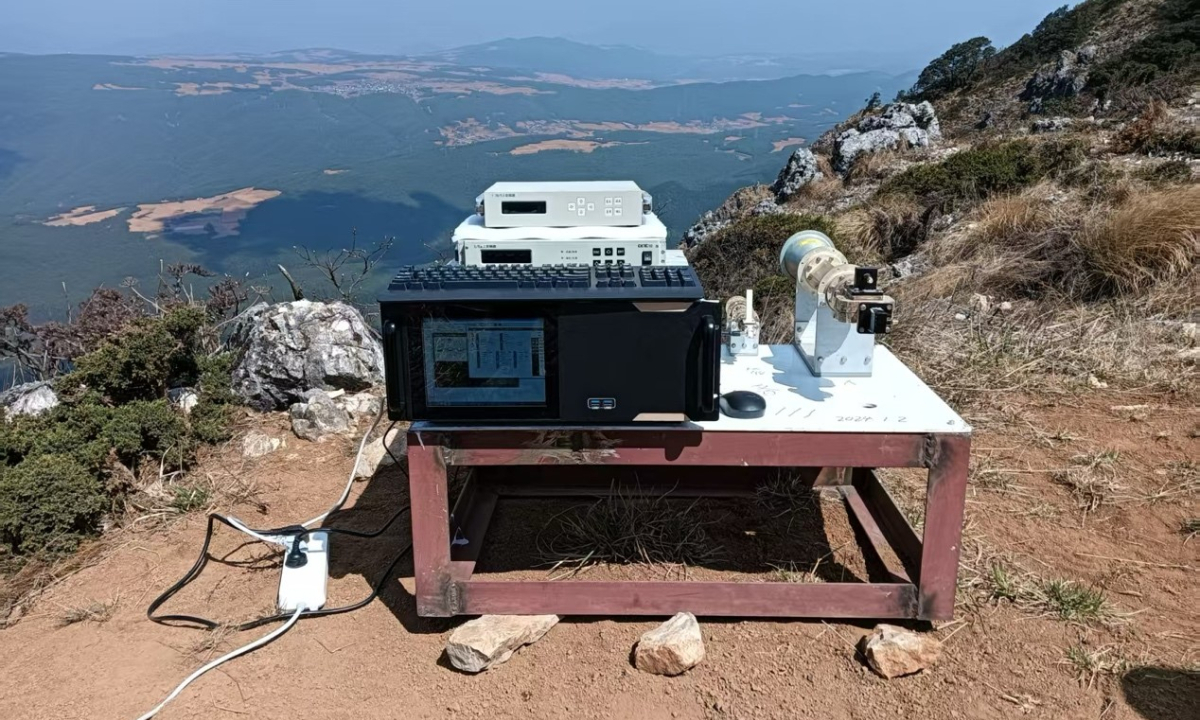China Successfully Tests New-gen Satellite-to-ground Data Transmission Technology

The wireless docking test site Photo: Courtesy of Aerospace Information Research Institute of the Chinese Academy of Sciences

The wireless docking test site Photo: Courtesy of Aerospace Information Research Institute of the Chinese Academy of Sciences
China has made a significant breakthrough in building a high-speed "data highway" between satellites and the ground. According to the Aerospace Information Research Institute (AIR) of the Chinese Academy of Sciences, a new-generation high-throughput satellite-to-ground data transmission system has been successfully tested, an official announcement showed on Monday.
The experiment was jointly conducted by AIR and Beijing Rong Wei Tech at AIR's Lijiang Station. It simulated satellite data transmission on the ground using advanced communication protocols. The test achieved a record-breaking X-band single-channel data rate of 2100 Mbps using 128QAM modulation, marking a 75 percent of increase over previous microwave communication speeds and setting a new national benchmark for X-band single-channel satellite-to-ground transmission.
This technological advance lays the groundwork for next-generation satellite communication systems and is expected to significantly enhance China's capacity for space-based remote sensing, data relay, and high-volume scientific data downlink.
As remote sensing applications expand and satellite payloads become increasingly sophisticated, the volume of observational data generated by satellites is growing rapidly. This surge in data has created an urgent need for faster satellite-to-ground (satcom) transmission speeds.
Currently, China's civilian satellites primarily use the X-band for data downlink, with standard single-channel transmission rates. However, these conventional data rates are increasingly inadequate to meet the massive demand for downlinking high-volume space observation data.
This mismatch between data generation and downlink bandwidth has become a major bottleneck, significantly affecting the efficiency and utility of satellite operations. As a result, enhancing single-channel data rates has become an urgent priority in China's satellite communication strategy.
To address this critical bottleneck, the AIR, in collaboration with Beijing Rong Wei Tech, has jointly proposed a high-order modulation and high-data-rate transmission solution based on microwave technology.
The solution significantly boosts satellite-to-ground data transmission rates by upgrading the technical capabilities of key ground system components – such as modulators and demodulators – while maximizing the use of existing ground infrastructure and avoiding excessive increases in hardware complexity. This approach enables a major leap forward in transmission capacity without the need for extensive system overhauls.
The recent experiment achieved breakthroughs in a range of critical technologies, including phase noise compensation, nonlinear correction, and channel equalization. Notably, it marked the first time that a deep neural network model has been integrated into the core algorithms of satellite data reception demodulators, leveraging artificial intelligence to enhance satellite-to-ground data transmission.
According to Huang Peng, a research fellow and director of the China Remote Sensing Satellite Ground Station under the AIR, this achievement offers a new, cost-effective technological solution to overcome the data transmission bottlenecks in China's satellite communications. With future engineering applications, the results are expected to contribute original, independently developed technologies that will support China in securing a competitive edge in science and technology and advancing its strategic space industry.
Global Times



News & Events